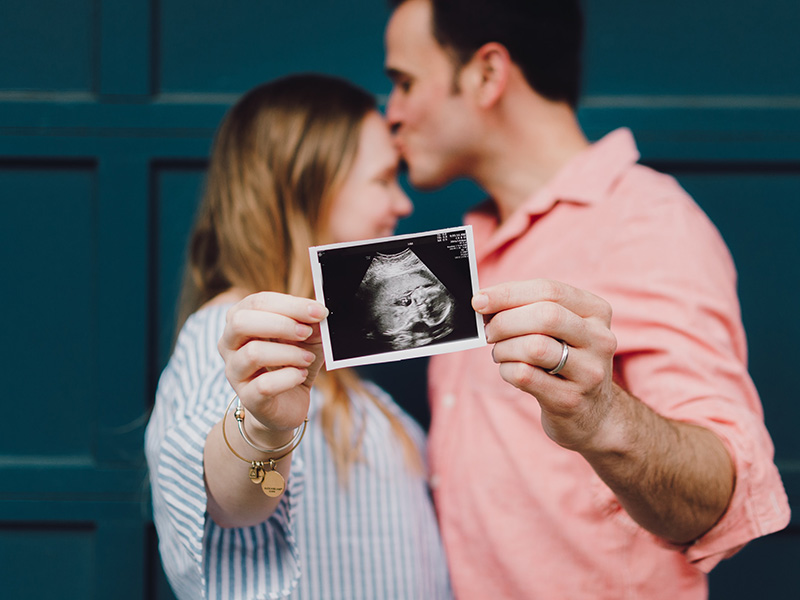
-
Identifying Your Fertile Days
Identifying your fertile days can be challenging because an average egg lives for less than 24 hours and an average sperm lives for less than 72. The ovulation process happens fast, so it’s rather essential to identify fertile days with an ovulation calculator and act accordingly.
Determine the Length of Your Cycle
Start by marking your calendar on the day you get your period. This is Day One. Count each day until your next period arrives to begin again at Day One. In other words, the length of your menstrual cycle is the number of days from the first day of bleeding in your last period, to the first day of bleeding in your next. From this figure, subtract 14 days from the end of your current cycle to determine the approximate day you ovulate.
-
Calculating Your Fertile Window
When it comes to conception, it’s all in the timing. To calculate your fertile window, you need to determine what day you ovulate. To do this, you need to know the length of your menstrual cycle. Is it regular? How many days go by between your periods? These are important bits of information to know. You can track this information on a calendar or with an ovulation calculator to determine the length of your cycles.
- If your cycles are very regular, you may be able to determine when you ovulate fairly easily. In the average menstrual cycle, ovulation occurs 14 days before the menstrual period arrives — or on Day 14 of a 28-day cycle. So if you subtract 14 days from the length of your cycle, you’ll get an idea of when you ovulate.
- If your cycles aren’t exactly regular, or you’d like a more accurate picture of your cycle, there are a number of tools that can help you identify your window.
-
Tools for Tracking Fertility
Once you have a clear picture of your ovulation cycle, there’s only one thing left to do. But remember, it can take time to conceive even if you know when you’re ovulating (on average, six to eight months). If you have irregular periods and it’s difficult for you to track them, a number of fertility charting tools exist to help you identify your peak fertile days.
Use an Ovulation Calculator
Better understand your menstruation cycle and timing of ovulation with the use of an online ovulation calendar. This tool works best for women with regular menstrual cycles because it uses data such as the start date of your last menstrual period, your menstrual period length and your luteal phase length to provide a personalized ovulation calendar. Ovulation usually occurs around Day 14 in a 28-day menstrual cycle.
Basal Body Temperature
One of the tip-offs of ovulation is that your regular body temperature, also known as your basal body temperature, increases slightly. A good way to detect this change is by taking your temperature every morning at the same time before you get out of bed. If you chart your temperature for a few months, you’ll probably begin to see a pattern that may help you predict when you are about to ovulate.
Ovulation Predictor Kits
Available in most drugstores, an ovulation predictor kit measures the level of luteinizing hormone (LH) in your urine. By testing your urine, you can find out when LH levels are rising. This is a sign that one of your ovaries is about to release an egg. Fertility monitors can accurately predict ovulation up to seven days in advance.
Cervical Mucus Changes
As your body prepares for ovulation it produces larger quantities of cervical mucus, a substance that facilitates the meeting of a sperm and egg. On your most fertile days just before ovulation, the mucus will appear clear, stretchy and slippery — similar to a raw egg white. After ovulation has passed, the mucus usually becomes thicker and then gradually dries up. To collect a sample of your cervical mucus, gently wipe your vaginal opening with toilet paper or a clean finger.
-
Getting the Timing Right
You are most fertile 2-3 days before you ovulate and an egg is released from your ovary. This is known as your fertile window. For this reason, most health care practitioners recommend you and your partner have intercourse every day or every other day beginning about five days before ovulation and continuing through the day after ovulation.
Why? Because although sperm can live as long as three to five days inside a woman’s body, an egg’s life span is much shorter — at around 12 to 24 hours. By having intercourse before you ovulate, as well as on the day of and the day after ovulation, you maximize your chance of getting pregnant.
Too Often?
If you’re worried about a diminishing return with having frequent sex, there’s little cause for alarm. A man’s sperm supply is constantly replenished, so daily sex shouldn’t pose a problem.
-
A Sperm Meets an Egg
In order for you to get pregnant, a number of things must happen in your reproductive system. It all starts with sperm cells and an egg.
The Basics
Sperm are microscopic cells that are made in male testicles and mix with other fluids to make semen. Millions of sperm come out every time a man ejaculates — but it only takes one sperm cell to meet with an egg for pregnancy to occur.
Eggs, on the other hand, live in a woman’s ovaries. The hormones that cause your menstrual cycle typically trigger the maturation of a few eggs every month. When an egg matures, it means it’s ready to be fertilized by a male sperm cell.
An Egg Meets a Sperm
About halfway through your menstrual cycle, one mature egg leaves the ovary during the process of ovulation and travels through the fallopian tube towards your uterus. The egg hangs out for about 12-24 hours, slowly moving through the fallopian tube, to see if any sperm are around.
If semen gets in the vagina, the sperm cells in it can swim up through the cervix (lower part of the uterus) and uterus and into the fallopian tube, looking for an egg. Sperm have up to six days to find an egg before they will die. When a sperm cell joins with an egg, this is known as fertilization. Since sperm can live for up to six days, fertilization doesn’t necessarily happen right away after sex.
-
Implantation
If a sperm cell does join up with your egg, the fertilized egg moves down the fallopian tube toward the uterus. It begins to divide into more and more cells, forming a ball as it grows. If the ball of cells attaches to the lining of your uterus, it’s called implantation. This is when pregnancy officially begins.
When a fertilized egg implants in the uterus, it releases pregnancy hormones that prevent the lining of your uterus from shedding — that’s why women don’t get periods when they’re pregnant. If your egg doesn’t meet up with sperm, or a fertilized egg doesn’t implant in your uterus, the thick lining of your uterus isn’t needed and it leaves your body during your period.
-
How Do Twins Happen?
There are two basic ways that twins can happen: identical or fraternal. Identical twins come from a single fertilized egg that splits into two separate embryos (pre-fetus stage). Because identical twins come from the same sperm and egg, they have the same genetic makeup (DNA) and look exactly alike. The term monozygotic twins refers to identical twins of the same gender who look alike.
Fraternal, or non-identical twins, are made when two separate eggs are fertilized by two separate sperm and both fertilized eggs implant in the uterus. This can happen if your ovaries release more than one egg through ovulation, or during certain kinds of fertility treatments. Fraternal twins have completely different genetic material (DNA), usually don’t look alike and may be different genders.






